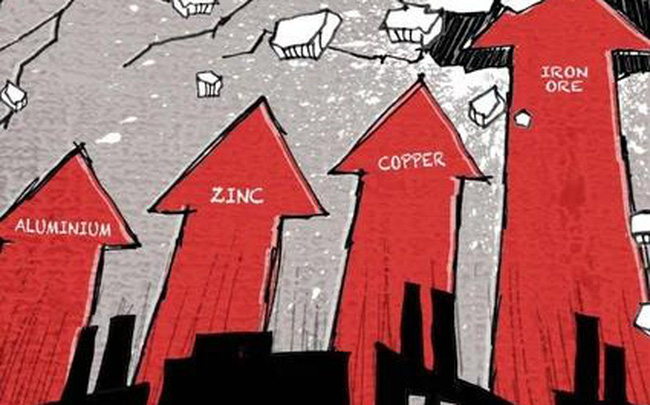China’s exports are about 20% higher than they were before the pandemic, and factories have struggled to fulfill orders. Disruptions to global commodity supplies, such as blockades that have restricted copper mining in Chile and Peru, have also pushed prices higher.
Eric Zhu, international sales manager for a Chinese forklift manufacturer, just sent a second letter of the year to a customer, explaining that prices must once again increase. “We need to share a portion of the increase with our partners. We can’t afford to cover the entire cost of the increase.”
Inflation in the US is growing at its fastest pace since 2008. Energy and commodity prices have skyrocketed. And like Mr. Zhu, investors and company owners are worried that China, the world’s factory, is starting to export inflation.
It’s easy to understand why people are particularly nervous. Last week, China said ex-factory prices rose at an annual rate of 9% in May, the highest level in more than a decade. That, coupled with rising shipping costs and a stronger yuan, could push up prices for goods made in China, from phones to mattresses. U.S. imports from China were 2.1% more expensive in April than they were a year ago, the fastest increase since 2012.
Eric Zhu, international sales manager for a Chinese forklift manufacturer, just sent a second letter of the year to a customer, explaining that prices must once again increase. “We need to share a portion of the increase with our partners. We can’t afford to cover the entire cost of the increase.”
Inflation in the US is growing at its fastest pace since 2008. Energy and commodity prices have skyrocketed. And like Mr. Zhu, investors and company owners are worried that China, the world’s factory, is starting to export inflation.
It’s easy to understand why people are particularly nervous. Last week, China said ex-factory prices rose at an annual rate of 9% in May, the highest level in more than a decade. That, coupled with rising shipping costs and a stronger yuan, could push up prices for goods made in China, from phones to mattresses. U.S. imports from China were 2.1% more expensive in April than they were a year ago, the fastest increase since 2012.
Moreover, the policy environment in China and the US is very different. While the Federal Reserve eased monetary policy significantly, the People’s Bank of China was much more cautious. They began to reduce their support cautiously. This could help explain the difference between the two countries’ inflation trajectories.
In the US, the Fed’s preferred measure of “core” consumer prices, which exclude food and energy, rose 3.1% year-over-year in April, the highest level since 1992. In China, core CPI in May increased by only 0.9% year-on-year. (Chinese farmers have also helped ease inflationary pressures. The recovery of the herd following the outbreak of African swine fever has sent pork prices down by almost a quarter from last year.)
Looking further ahead, some analysts say China’s aging population will turn the country into an “inflation generator”. In the early 2000s, China’s low wages allowed cheap Chinese consumer goods to appear in every corner of the world.
That suggests that a shrinking labor supply and rising wages will have the opposite effect. However, this is not so obvious. Low-end manufacturing has moved to cheaper places like Vietnam and Bangladesh, while the rapid rise of automation in China has also helped curb prices.
For now, however, the pressing question is whether China’s input price inflation will be temporary or permanent. The real answer lies beyond China. As vaccine deployment reaches a certain rate and normal life resumes in the US and Europe, people are likely to spend more on services like travel and dining, not just on goods purchased online. This should ease the pressure on goods, and more broadly on Chinese factories.


